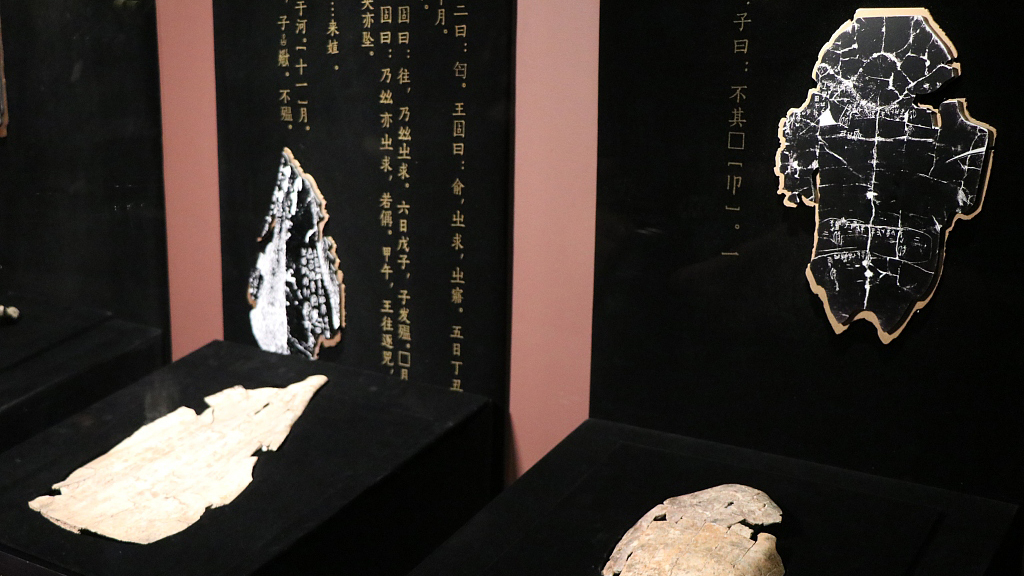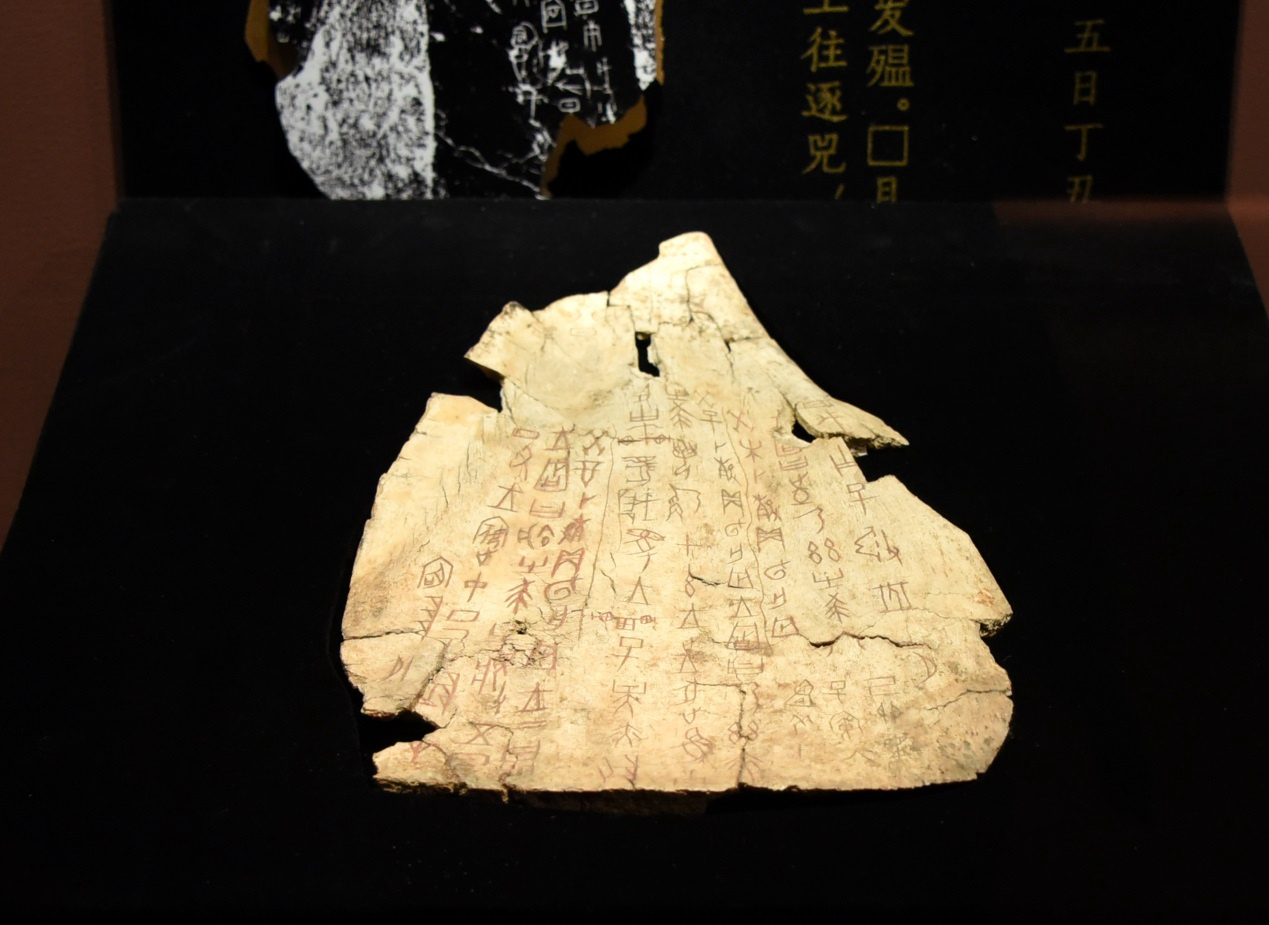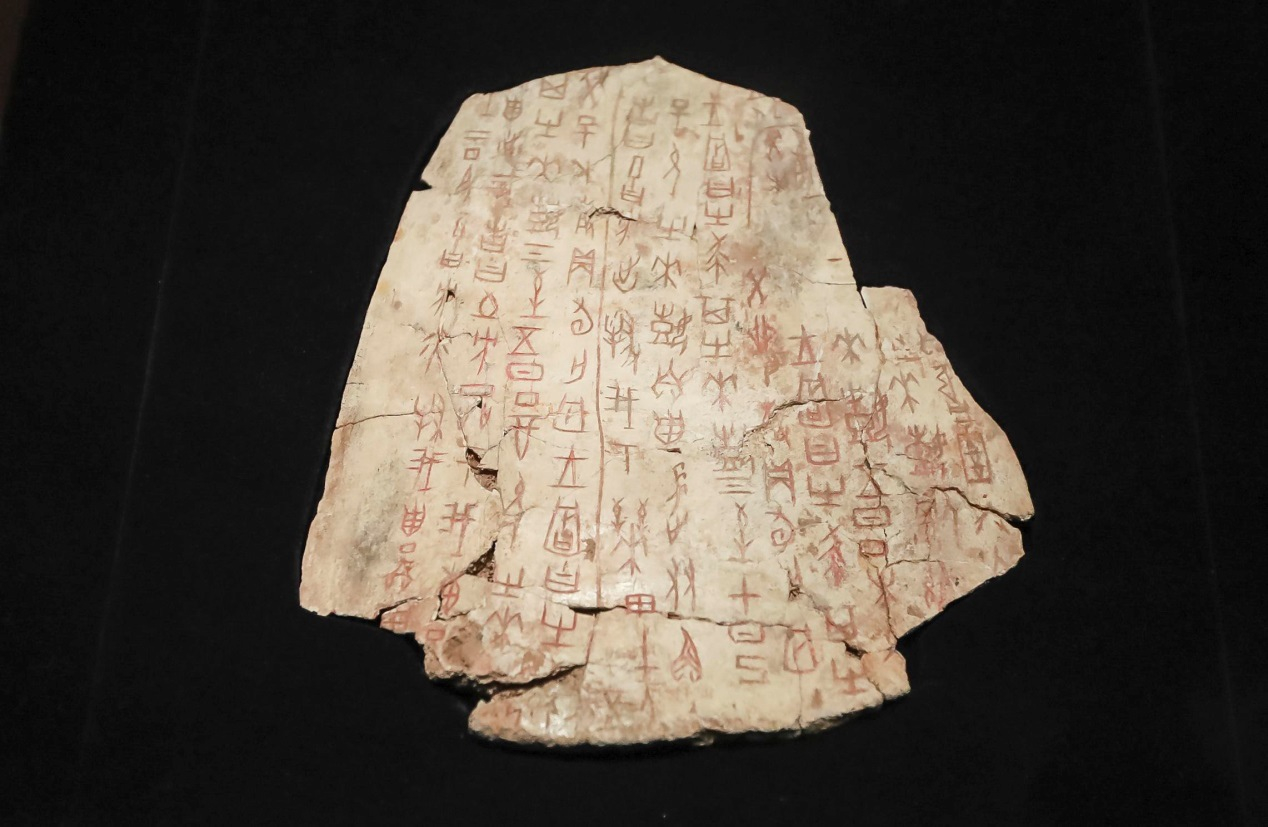02:20

It's been 120 years since the discovery of the oracle bone inscriptions or jiaguwen in Chinese, which is an ancient Chinese language named after the inscriptions on tortoise shells and animal bones. To mark the anniversary of the ancient Chinese characters' discovery, the National Museum of China is holding a special exhibition, offering visitors a chance to take a sneak peak at the oldest characters in China.
The artifacts covered in inscriptions, a primitive form of Chinese characters, date back to over 3,000 years ago to the Shang Dynasty (1600 B.C. - 1046 B.C.).

An oracle bone artifact is on display at the exhibition. /VCG Photo
An oracle bone artifact is on display at the exhibition. /VCG Photo
About 190 pieces of oracle bones, bronze works and jade items are on display. But they are just a small fraction of the oracle bone artifacts that have been discovered.
"Over 100,000 oracle bone fragments have been discovered around the world, and more than 4,000 ancient characters have been recognized from these artifacts, but just only one-third of the characters' literal meanings have been identified," Huang Dekuan, director of the Chinese Character Study Committee told CGTN.
Huang pointed out that China has made substantial progress in the study of the oracle bone inscriptions, but there is still a long way ahead to unlock all the mysteries they present.
"The primary work we have is to reassemble the fragments into its original pieces, which is quite difficult and complex. Then we have to identify which dynasties the oracle bones belong to, and I can say we have made great progress. These are the bases for us to study the meaning of the inscriptions and their cultural significance," said Huang.

An oracle bone artifact is on display at the exhibition. /VCG Photo
An oracle bone artifact is on display at the exhibition. /VCG Photo
The professor added that the latest technologies have been applied to ongoing research, including multi-dimensional photography and computer programs, which can help recover the fragments.
Multimedia technology is also enabling visitors to get a better understanding of the works — images of the inscriptions have been put on screen at the exhibition to illustrate the literal meaning of each character.
The exhibition will run through December.